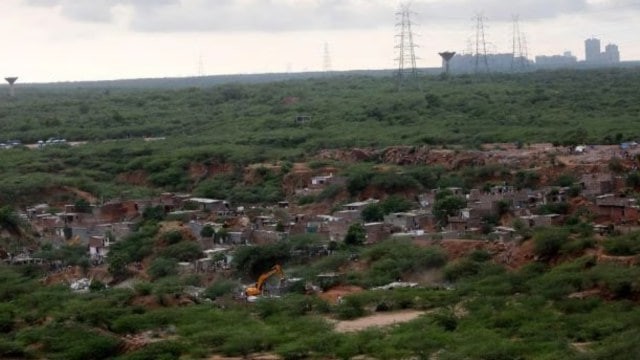Description

Source: The Week
Disclaimer: Copyright infringement not intended.
Context
- Demand for tiger skin, poaching and other administrative lapses at Veerangana Durgavati Tiger Reserve, Madhya Pradesh, are probed after wildlife activist Ajay Dubey files a complaint about negligence to conservation.
Details
Key points:
- Madhya Pradesh government begins probe into tiger poaching, other anomalies at Veerangana Durgavati Tiger Reserve.
- Some of the issues that come under the purview of the act include, Illegal felling of trees and transportation of woods in the Nauradehi Sanctuary.
- Nauradehi Sanctuary was initiated in 2018 for the reintroduction programme; current tiger numbers are 16, in the new tiger reserve.
- Insufficient prey and health facility that are key factors that have led to degradation of tiger population in the reserve.
Poaching in India:
- The hunting of the tigers to supply the demand for body parts such as claws, whiskers, and bones also remained a large problem.
- Southeast Asia traditional medicine and black market and superstition are root causes of demand.
- Some of the poaching techniques used are electrocuting, using poisonous content, and trapping.
- Out of all the states, Madhya Pradesh has become the most affected one, where over 90 tiger mortalities have been reported in the last 29 months.
- Electrical shock from fences used in guarding crops and snares used on other animals are also some of the causes of accidental deaths.
Difficulties in Addressing the Issue:
- The low conviction rates for poaching discourage the enforcement of laws against the acts.
- There is no standard way for states to report tiger population which complicates the verification process.
- This is because human and animals compete for space and resources hence resulting to retaliatory killings by the villagers.
- Some of the tribal people who have always engaged in hunting the tigers may consider the act as a means of making money.

Recommendations:
- Enhance the vigour of anti-poaching strategies in reserves and anti-poaching operations against poachers.
- Forests need to be patrolled better and surveillance needs to be provided with better technology.
- Promoting the mutual cooperation with the local people and forest officers to resolve human-wildlife conflict.
- Encourage the local people living around tiger reserves to find other sources of income so that they can reject poaching.
- Step up public enlightenment crusades to stop myths used in trade in tiger parts and their presumed healing power.
- State wise tiger census data should be made public for cross verification of the government’s claims.
- Petition the authorities to increase the legal measures protecting the wildlife and to enforce severe punitive measures against poachers.
- Spending in research to come out with non-lethal methods, means and ways of safeguarding crops and livestock from tigers.
- Support the programmes that raise the quality of life of citizens and at the same time create value for the protection of tigers.
Tiger Reserves in India:
- Ecotourism in Tiger Reserves:
- Encourages sustainable tourism that is the use of natural resources without adversely affecting the status of their resources.
- Improves the local communities by offering education and financial prospects.
- Provides relatively easy walking and nature viewing tours in famous reserves and contributes to the funds for conservation in other parts of the world.
- Regulations and Management:
- Laws such as the Wildlife Protection Act (1972) reduce interference with habitats and guarantee the execution of tigers’ preservation strategies.
- Conserves tiger forest space so the organisms can live comfortably and there is good balance in the ecosystem.
- The exploitation of logging or the process of timber production is carried out sustainably within specific regions.
- State-wise Profiles:
- Gives basic information such as size of the reserve, number of tigers, and the species of animals found in the reserve.
- Consists of written records that affirm the station’s protection and data captured through GIS of the reserve’s land cover.
- Map of Tiger Reserves:

- Conservation Plans:
- Some of these are as follows; Staff development programs as a way of managing the health sector.
- There can be no stable and healthy Tiger populations.
- The second application is the dispersal corridors linking the protected areas for a more extensive coverage of the ecosystem needs.
Veerangana Durgavati Tiger Reserve:
- Location:
- The Veerangana Durgavati Tiger Reserve lies in Sagar, Damoh and Narsinghpur districts of Madhya Pradesh in India.
- In the Madhya Pradesh it ranks seventh while in India it is at the 54th position.
- Named after Rani Durgavati who is an epitome of bravery and Gond

- Forest Type:
- Tropical mixed dry deciduous forests with a small portion of the teak forest.
- River:
- Splits the Narmada and Yamuna River basin.
- Fauna:
- Mammals: Tiger, leopard, wolf, jackal, Indian fox, striped hyena, sloth bear, deer – sambar, chital, barking deer, Indian bison, wild boar.
- Birds, amphibians, reptiles & fish are some of the species of birds that are found in this region.
- Flora:
- Teak, Sal, Bamboo, Mahua, Indian Gooseberry.
Sources:
The Week
|
PRACTICE QUESTION
Q. The fauna of Veerangana Durgavati Tiger Reserve includes:
1.Asiatic Black Bear
2.Indian Gaur
3.Gangetic Dolphin
Which of the following options are the MOST LIKELY inhabitants of the reserve?
(a) 1 and 2 only
(b) 2 and 3 only
(c) 1 and 3 only
(d) 1, 2 and 3
Answer: (b)
|














